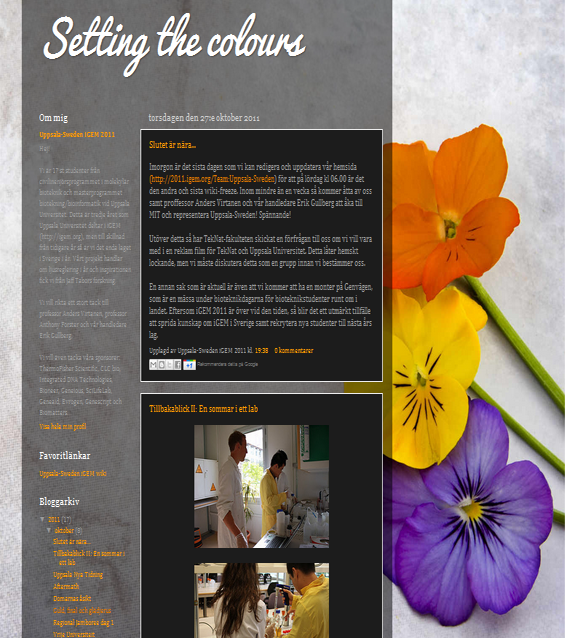Team:Uppsala-Sweden/Collaboration
From 2011.igem.org
| Line 45: | Line 45: | ||
</div> | </div> | ||
The METU-BIN-ANKARA team provided us their software which they developed for their project to test it if we can use for our Project. We examined the software by searching the parts that have been used during our Project.We used red,blue and green lights as input which activate red sensor(cph8),green sensor(ccaS) and blue sensor(YF1).We are aiming to get three colours as output which are blue output(amilCP),red output(mCherry) and green/yellow output(amilGFP). | The METU-BIN-ANKARA team provided us their software which they developed for their project to test it if we can use for our Project. We examined the software by searching the parts that have been used during our Project.We used red,blue and green lights as input which activate red sensor(cph8),green sensor(ccaS) and blue sensor(YF1).We are aiming to get three colours as output which are blue output(amilCP),red output(mCherry) and green/yellow output(amilGFP). | ||
| - | |||
| - | |||
| - | |||
{{Template:Uppsala-SwedenTemplatefooter}} | {{Template:Uppsala-SwedenTemplatefooter}} | ||
Revision as of 21:39, 21 September 2011
Freiburg
Team Uppsala-Sweden has helped team Freiburg with trouble-shooting PCR. Uppsala shared the primer design of some light sensor genes, as well as information on touchdown PCR with Freiburg. Notably, the primer sequence for cloning cph8 from Jeffrey Tabor's pJT122 plasmid was disclosed by Uppsala. Furthermore, PCR protocols that proved successful were shown to Freiburg. This information was also present in Freiburg's notebook (16.08).
https://2011.igem.org/Team:Freiburg/Notebook/16_August
TU Munich
TU Munich have had problems with assembling the red light-sensor cph8 with other DNA constructs. The ligation attempts persistently failed to work. In order to help TU Munich keep going with the progress, Uppsala sent a functional cph8 plasmid to Munich. TU Munich confirmed that they have received the plasmid and successfully transformed some cells with it. TU Munich also "checked it for correct size on gel and it looks fine". In exchange, TU Munich provided information on EnvZ/OmpR kinetics to Uppsala to assist team Uppsala with their modelling.
Bilkent UNAM Turkey
We helped the Bilkent Unam iGEM team by providing them with BL-21 E.Coli strain which was needed in order for their project to proceed.This strain was obtained from one of our advisor Anders Virtanen's lab. and prepared to be sent.It was confirmed that it was received.
Collaborator...
Description
METU-BIN-ANKARA
The METU-BIN-ANKARA team provided us their software which they developed for their project to test it if we can use for our Project. We examined the software by searching the parts that have been used during our Project.We used red,blue and green lights as input which activate red sensor(cph8),green sensor(ccaS) and blue sensor(YF1).We are aiming to get three colours as output which are blue output(amilCP),red output(mCherry) and green/yellow output(amilGFP).
 "
"

















